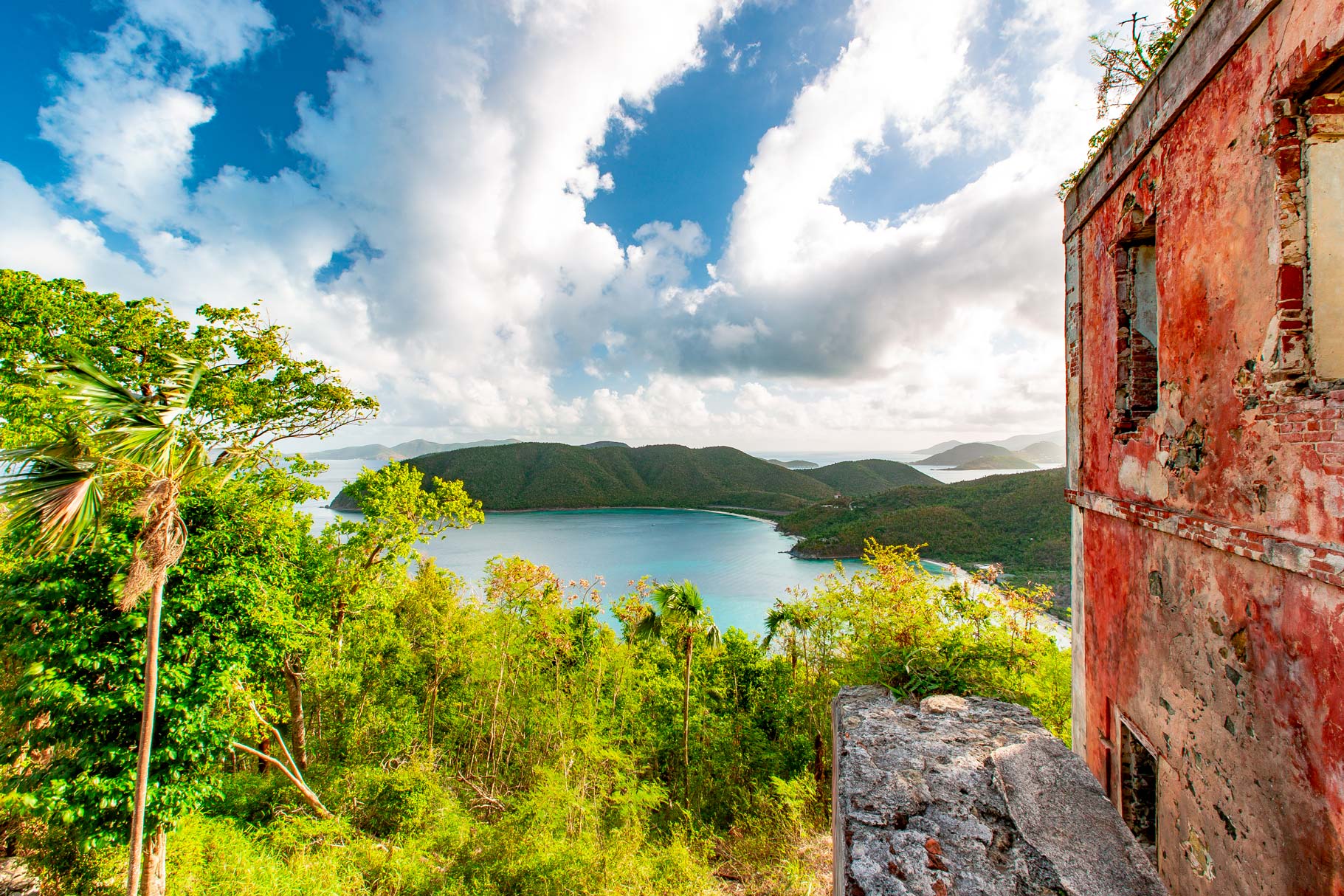
Virgin Islands National Park is a bucket-list destination for park fans like myself. I had long planned my trip to the tropical park and was devastated when Hurricane Maria wreaked havoc.
When I finally made it to the park two years later I quickly realized that the differences in expectations versus reality were going to be stark.
While the idyllic leaning palms are gone (over 90% of them anyway), and the landscape is forever changed, Virgin Islands National Park is still spectacularly beautiful.
Would I visit again? In a heartbeat. What this island has to offer is unlike anywhere else in the world.
About My Travels to Virgin Islands National Park
I first visited Virgin Islands National Park in 2018, nearly two years after the island of St. John (along with much of the Caribbean) was devastated by hurricanes. All the landscapes I had seen in photos of the park when researching prior to my visit were radically altered.
Sometimes I would arrive at a destination and wonder if I was actually there because the photos were so different than the reality on the ground. So, I set out to document the park in it’s current form to give folks an idea of what to expect now.
To do this, I explored nearly every square inch of the park land on the island along with my wife. It was an unforgettable time. If you’re wondering if the island still has it’s charm just watch the film I made below!

Virgin Islands National Park Guide
Table Contents
- About the Park
- History
- Map
- Directions & Location
- Video
- Weather & Seasons
- Things to Do
- Camping & Lodging
- Photos
About Virgin Islands National Park
Situated along the outskirts of the Caribbean on the island of St. John, Virgin Islands National Park is a picture-perfect tropical paradise featuring crystal-blue waters, world-class snorkeling, jungle ruins, white sand beaches, sea turtles and so much more.
Virgin Islands represents one of only a handful of truly tropical National Parks in the system and is the closest one to the East Coast.
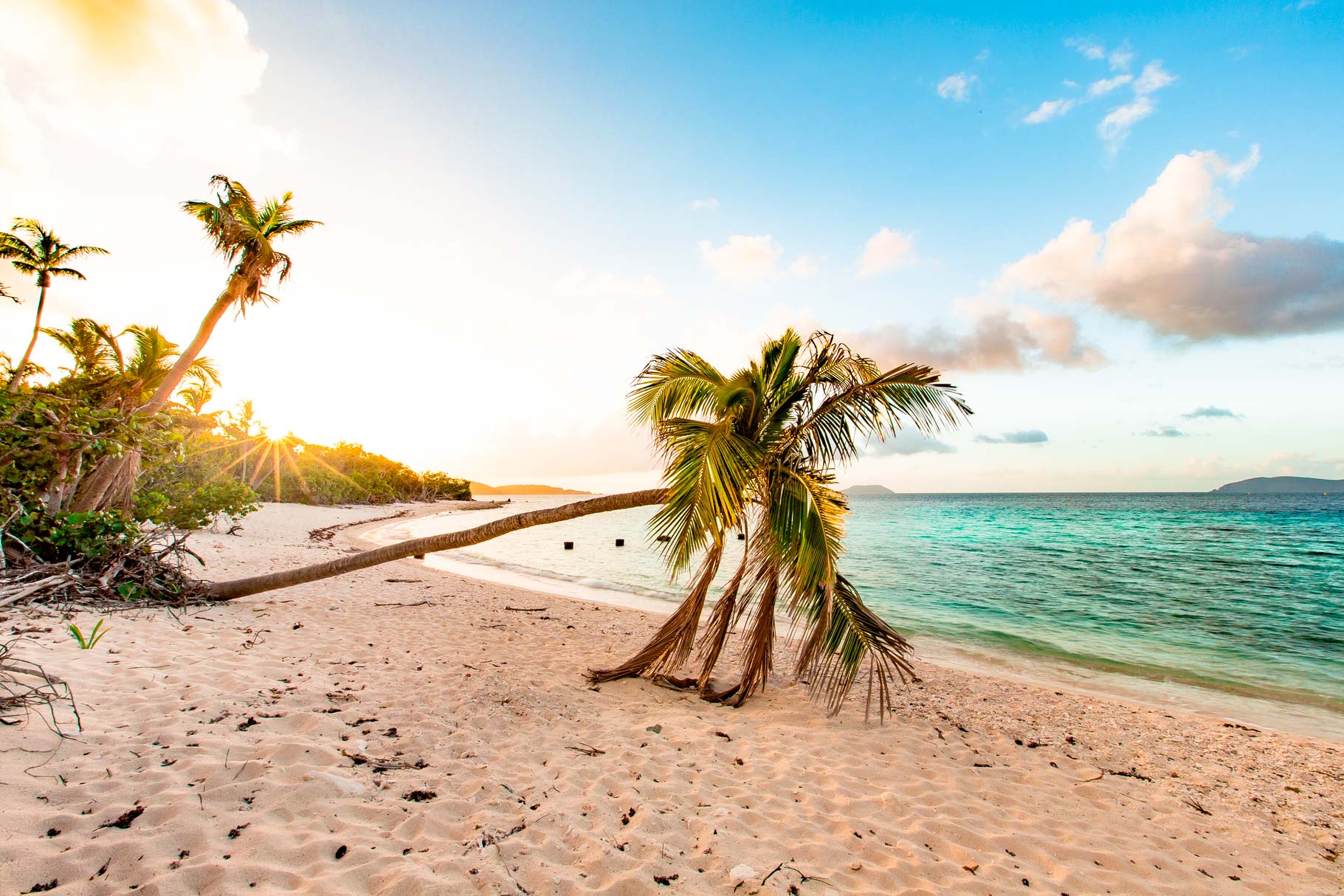
Things to Know Before You Visit Virgin Islands National Park
Please, Wear Sunscreen.
- SUNSCREEN: Many sunscreens have been outlawed in the Virgin Islands due to reef-damaging ingredients. Goes without saying but we’ll say it anyway – wear sunscreen! The Caribbean is unforgiving on unprotected skin. We’ve made that mistake enough times to make lathering up a top priority. We highly recommend this one (which is reef-safe).
Map & Guidebook
- This is the best map to use for Virgin Islands National Park.
- And this is the bet guidebook we found for Virgin Islands National Park (and we ordered several)
Sandals are your friend.
- SANDALS: There’s nothing like the feeling of warm sand between the toes. There’s also nothing quite like the feeling of something sharp and pokey in the toes. We recommend these sandals that we love, and these sandals which have straps.
- SHOES/BOOTS: Some of the hikes on the island are best attempted with a sturdy pair of boots or hiking shoes.
Goggles and flippers for the win.
- SNORKEL GEAR: There is an actual underwater trail in Virgin Islands National Park – how cool is that? In order to best experience it along with so many other amazing underwater spots, you need snorkel gear! This is the inexpensive set we used. We also liked this cool American Flag swimming cap
Underwater camera housing… to ruin, or not to ruin.
- UNDERWATER CAMERA HOUSING: So here we must add the caveat that we lost a camera to the depths in Virgin Islands National Park (at Maho Bay). Anytime you get your camera near water, let alone saltwater, you’re taking a risk. With that being said we have used this underwater camera housing in the past and had luck with it.
Rash guards are great for extra UV protection, especially after that inevitable burn.
- RASH GUARD: We were told to be sure and pack rash guards for this trip not so much for the coral etc but for extra UV protection (especially for Will who burns easily). We got these inexpensive ones off Amazon and we were sure glad to have them.
Do not touch our dear friend, the sea turtle.
- Sea Turtles: Green Sea Turtles are protected under the Endangered Species Act. Believe it or not, it is a felony to touch one. As tempting as it might be, resist the urge and admire from a distance. We’ve all gotten pretty good at social distancing – best to apply these practices to our sea turtle friends as well.
Where to Stay
Visiting Virgin Islands National Park? If you haven’t decided where to stay (yet) check out our helpful guide on visiting Virgin Islands National Park for tips. Don’t have time? Here’s our favorite place to stay on St John.
Due to the long-term closure of Caneel Bay (the only resort in the park destroyed by the 2017 hurricanes) and the ensuing battle with the park service over the future management of the property, the closest hotels & resorts are back in Cruz Bay.
Things to Pack for Virgin Islands National Park
Map: I use this one.
Guide: I highly recommend this one.
Insect Repellent: You hope not to need it, but you want to have it. We typically bring an Eco-Friendly Insect Repellent with us just in case.
Shoes/Boots: Some of the hikes on the island are best attempted with a sturdy pair of boots or hiking shoes.

Details About Virgin Islands National Park
Location: St. John, US Virgin Islands
Established: August 2, 1956
Size: 7,259 acres
Native Land: Ciboney, Kalinago (Carib), Taino (Arawaks)
Visitors: 112,287 (2018)
Entrance Fees: Free (or $80 for America the Beautiful Pass)
Virgin Islands National Park History
Prehistoric
Virgin Islands National Park has prehistoric artifacts dating as far back as 840 BC. It is one of very few national park with that sort of prehistory.
According to the National Park Service, there are significant prehistoric sites on nearly every beach and bay within the park.
Native Peoples & The Arrival of Columbus
During the Archaic period the island was inhabited by nomadic hunter gatherers. Fast forward to 1493, the area was inhabited by the Taino people who were there to greet non other than Christopher Columbus.
From there, the island’s history takes a dark turn (thanks a lot, Columbus). Enslaved peoples are imported to do the work of Europeans looking to exploit the islands resources for strategic, military, and financial gain.
To this day, ruins from these times still exist on the island and are amazing to see and explore (more on that below).
Establishment of the National Park
Fast forward a few hundred years to next to get to the park’s founding. According to the National Park Service, a wealthy young philanthropist happened to be taking his boat around the Caribbean (as wealthy young philanthropists do) and spotted “one of the most beautiful places” he had ever seen.
The philanthropist was none other than Laurance Rockefeller, son of oil tycoon John D Rockefeller. Lucky for future generations, Rockefeller decided this place was so beautiful it ought to be preserved for future generations.
Rockefeller along with the Jackson Hole Preserve (founded by his brother) set out to purchase 5,000 acres which they eventually turned over to the federal government for the creation of Virgin Islands National Park.
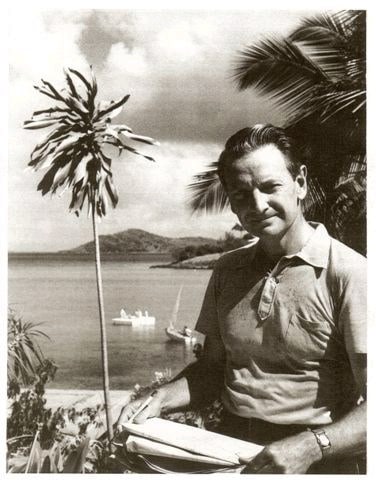
RELATED: If you’re interested in learning more about island history, check out our Cumberland Island post.
Virgin Islands National Park Map
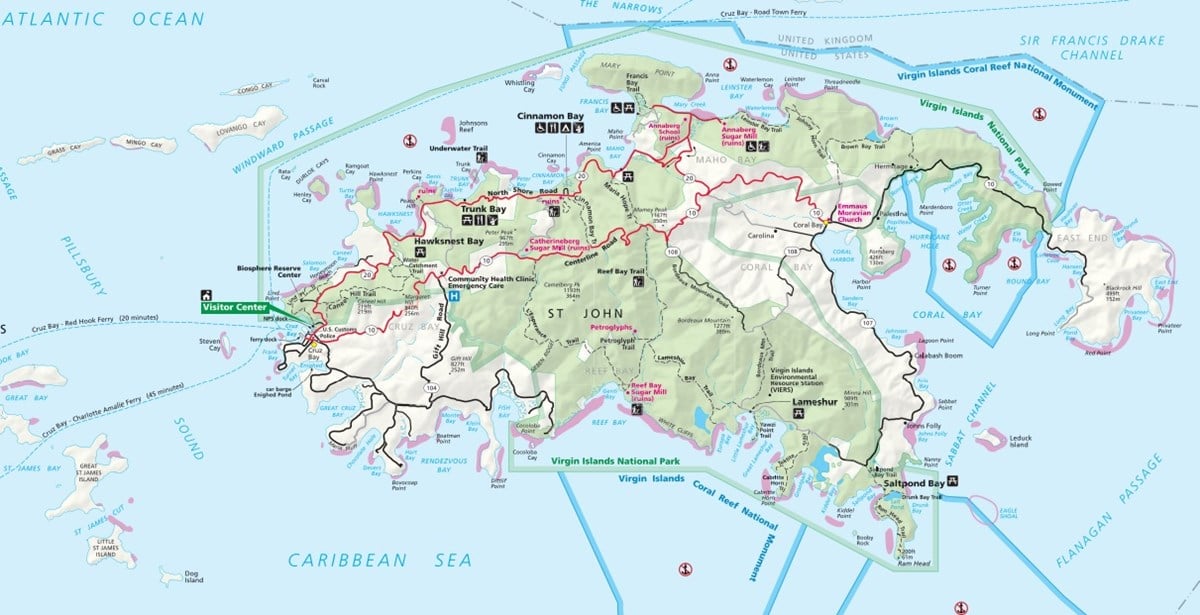
Where is Virgin Islands National Park?
Virgin Islands National Park is located along the outskirts of the Caribbean Ocean in the US Virgin Islands. The majority of the park is located on the island of St. John.
Getting to Virgin Islands National Park – Directions & Location
Closest Airport: STT – Cyril E. King Airport (distance – 13 miles from Cruz Bay)
The fastest way to get to Virgin Islands National Park is by plane, flying into St. Thomas’s Cyril E. King Airport Airport. Cyril E King Airport on the neighboring island of St Thomas (also part of the US Virgin Islands so no passport required for Americans) is the closest (and most affordable) place to fly into to get to Virgin Islands National Park.
Rental Car: St Thomas (Hertz, Enterprise, Budget, Dollar, more)
Ferry to St. John
Ferry: After flying in to St. Thomas you’ll need to catch a ferry over to St. John. This can be done in one of two places currently: Charlotte Amalie, or Red Hook (furthest from the airport but closest to St John). The cost per adult to ride the ferry is $20 each way.
Award-Winning Virgin Islands National Park Video
About the Virgin Islands Video
VIRGIN ISLANDS 8K is a visually stunning journey through one of the most beautiful national parks in the world, Virgin Islands. Journey with More Than Just Parks as we explore this tropical paradise located on the outskirts of the Caribbean Sea.
Swim with sea turtles, explore ancient jungle ruins, relax on white sand beaches, and soak in the island beauty. This is Virgin Islands National Park.
How We Did It
To make this film we spent weeks on the island of St John (part of the US Virgin Islands) hiking every trail in Virgin Islands National Park and swimming every bay (for good measure).
We visited the park after the 2017 Hurricane Maria damage and were frankly quite surprised by what we saw. When you look at a lot of the photos and video online it does not represent what exists in the park today.
All of our footage represents the park in its current, post-hurricane, status.
Virgin Islands National Park Locations:
- Trunk Bay
- Maho Bay
- Lameshur Bay
- Cinnamon Bay
- Reef Bay (trail, ruins, & sugar mill)
- Annaberg Plantation Ruins
- Ram Head
- Caneel Hill Trail
- Margaret Hill
- Catherineberg Ruins
- Honeymoon Beach
- Salomon Beach
- Francis Bay
- Waterlemon Cay
- Little Lameshur Bay
- and more
RELATED: 14 BREATHTAKING National Park Videos to Inspire Your Next Trip
Virgin Islands Seasons & Weather
The weather at Virgin Islands National Park is fairly predictable. Warmth and sunshine are abundant year-round. The major caveat here is hurricane season which can (and does) wreak havoc on the island.
Best Time to Visit Virgin Islands National Park
The best season to visit Virgin Islands National Park is Winter when temperatures are still warm and both humidity and crowds are down.
Winter is also known as the rainy season but rain typically comes and goes quickly in the Virgin Islands. This is a great time of year to visit as well as winter marks the end of Hurricane season.
Who doesn’t dream of tropical islands during the dead of winter? Can’t just be me…
I would recommend visiting anytime between December through April.
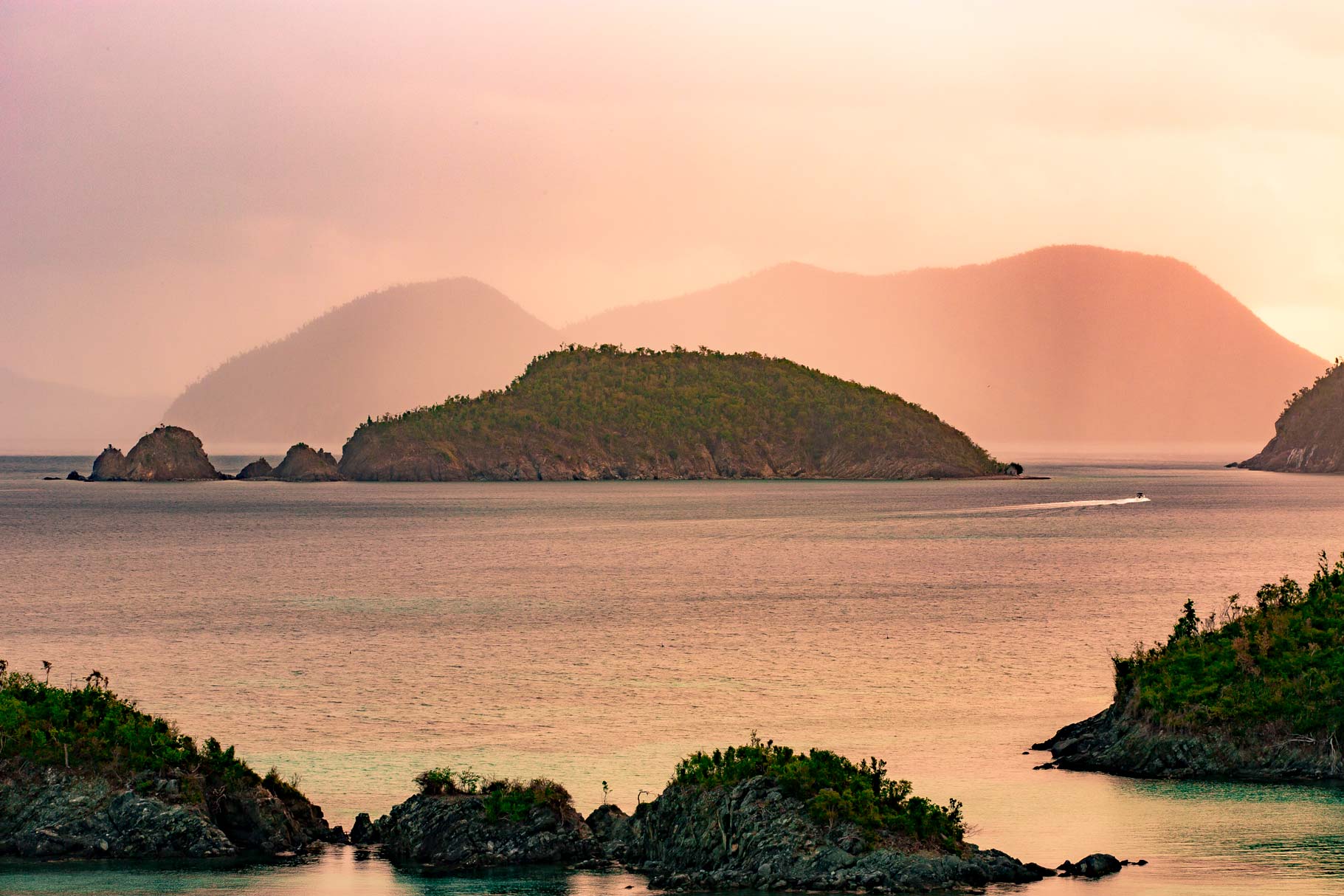
RELATED: 12 (AMAZING) Things to Do in Virgin Islands National Park
Spring in Virgin Islands National Park
Spring in Virgin Islands is lovely with warm to hot temperatures and no shortage of sunshine. Spring brings more tourists than fall & winter but still not as many as summer.
A big added benefit for visiting Virgin Islands in the spring over fall & summer is hurricane season is over.
You can also find less expensive flights to the Virgin Islands than in summer when visitation peaks.
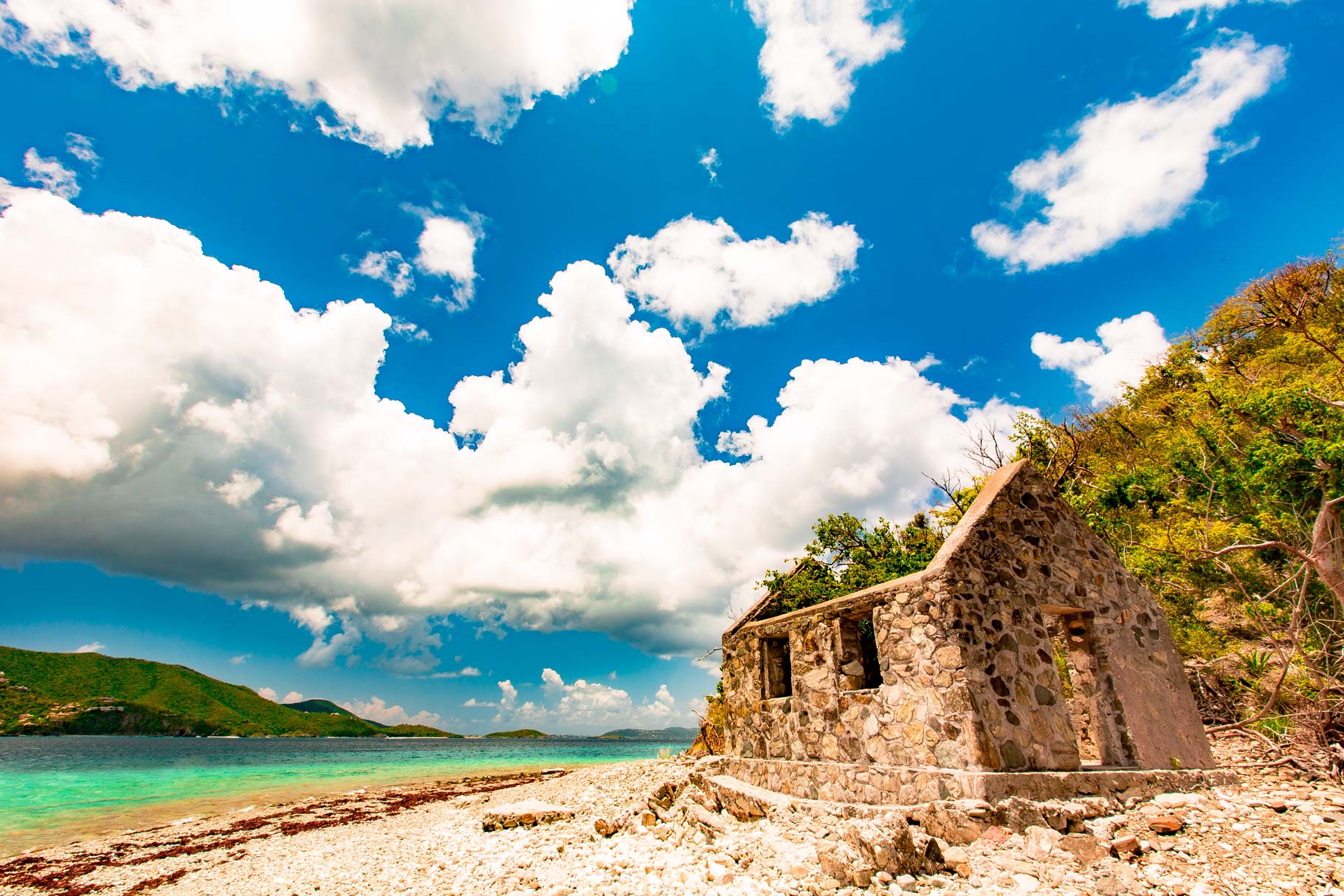
Summer in Virgin Islands National Park
Summer in Virgin Islands National Park is the most popular time to visit with hot temperatures, abundant sunshine, bigger crowds, and higher prices. This time of year brings the biggest crowds to the Virgin Islands.
Summer also marks the real start of the hurricane season although fall is peak time for hurricanes.
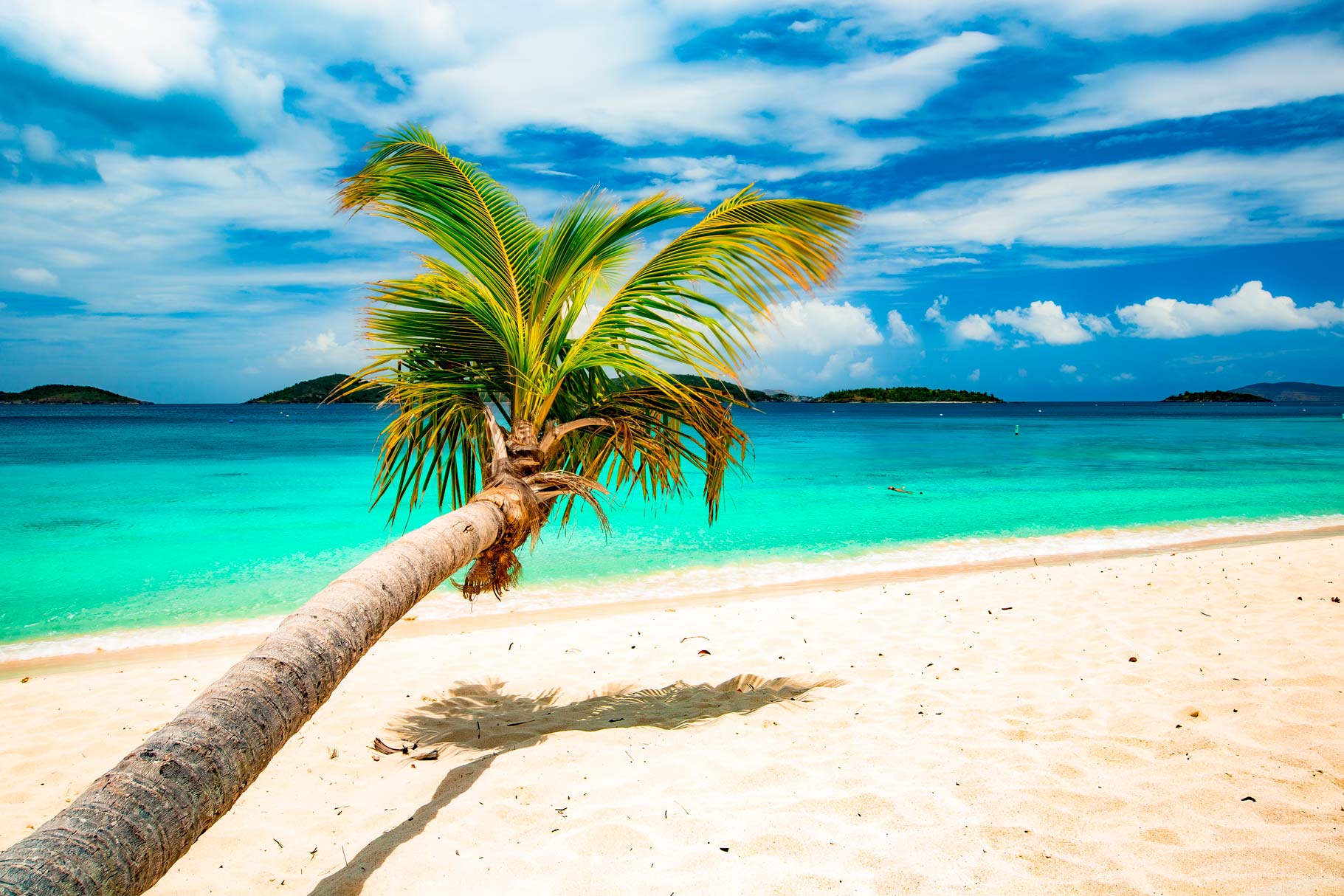
Fall in Virgin Islands National Park
Fall in Virgin Islands National Park is an underrated season with visitation dwindling, temperatures still warm to hot, and abundant sunshine. Fall is a shoulder season on St. John for sure which makes it nice in some ways (fewer tourists) but comes with minimal store/restaurant closings.
The major drawback to planning a trip to Virgin Islands in the Fall is that it lands your visit squarely in the middle of hurricane season. The flights are cheaper for a reason – it’s a bit of a roll of the dice.
One of the pros of visiting in the fall is smaller crowds due to the shoulder season.

RELATED: 10+ Must See National Parks This Fall (A Stunning Guide)
Winter in Virgin Islands National Park
Winter in Virgin Islands is a lovely season with visitation down, temperatures a bit cooler (but still warm to hot), and a plethora of sunshine. During this time of year you’ll see more tourists than fall but still not as many as spring & summer and is considered a shoulder season on St. John.
A big added benefit for visiting in winter over fall & summer is hurricane season is over.
Plus, you can find less expensive flights to the Virgin Islands than in summer & spring when visitation peaks.
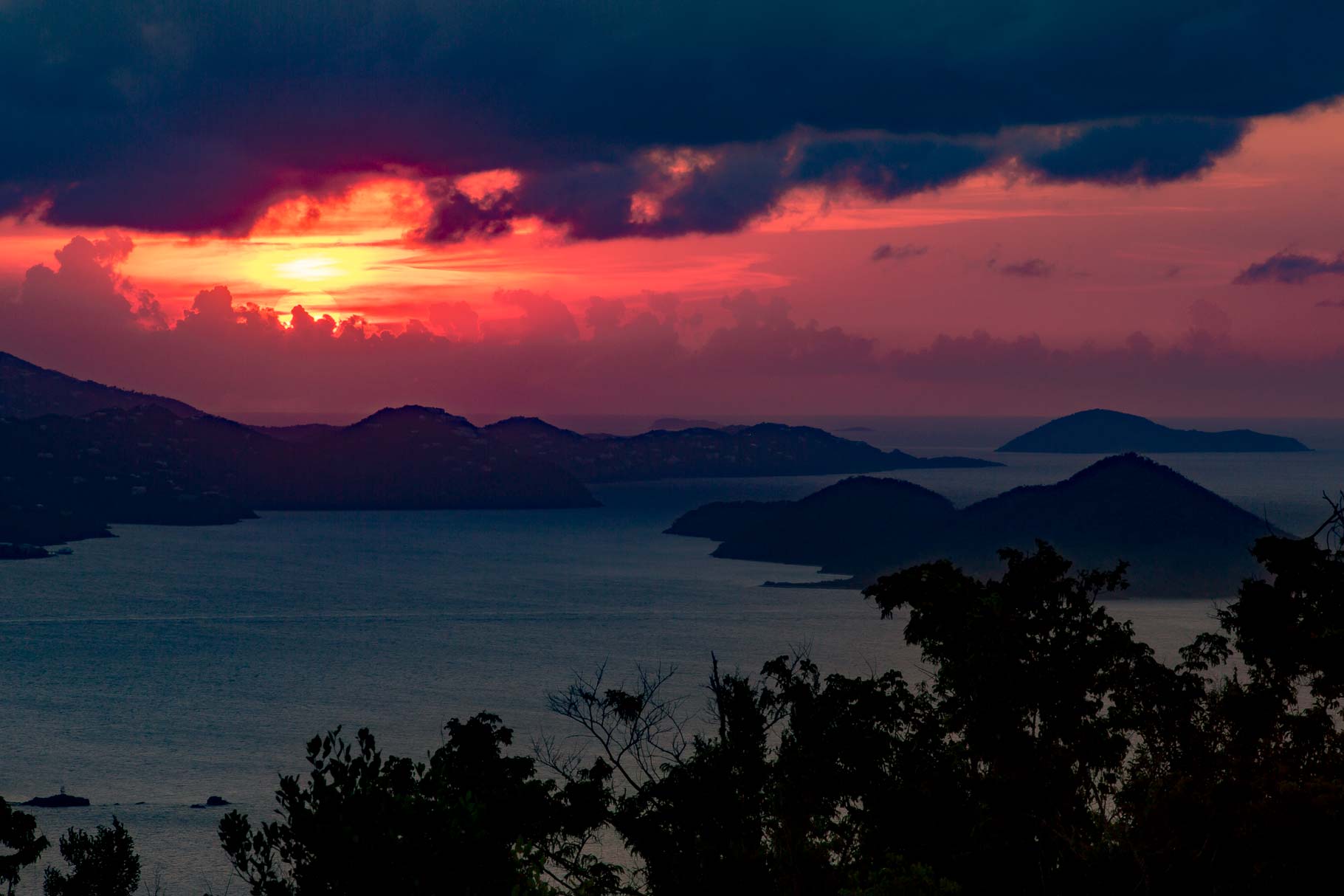
Best Things to Do in Virgin Islands National Park
Virgin Islands National Park is a world-class tropical island paradise. There are an abundance of incredible things to do in Virgin Islands like snorkeling with sea turtles, exploring jungle ruins, relaxing on beautiful beaches, kayaking to offshore islands, and more.
We’ve listed some of our favorites things to do in the Virgin Islands below. For a complete list visit our 12 (AMAZING) Things to Do in Virgin Islands post.
1. Relax at Maho Bay
Maho Bay is one of the most stunningly beautiful bays in all the world. Here you will find palm trees, sea turtles, crystal blue waters, and white sand beaches. The bay is the perfect place to spend a relaxing day on the beach soaking in one of the most beautiful sites on the planet.
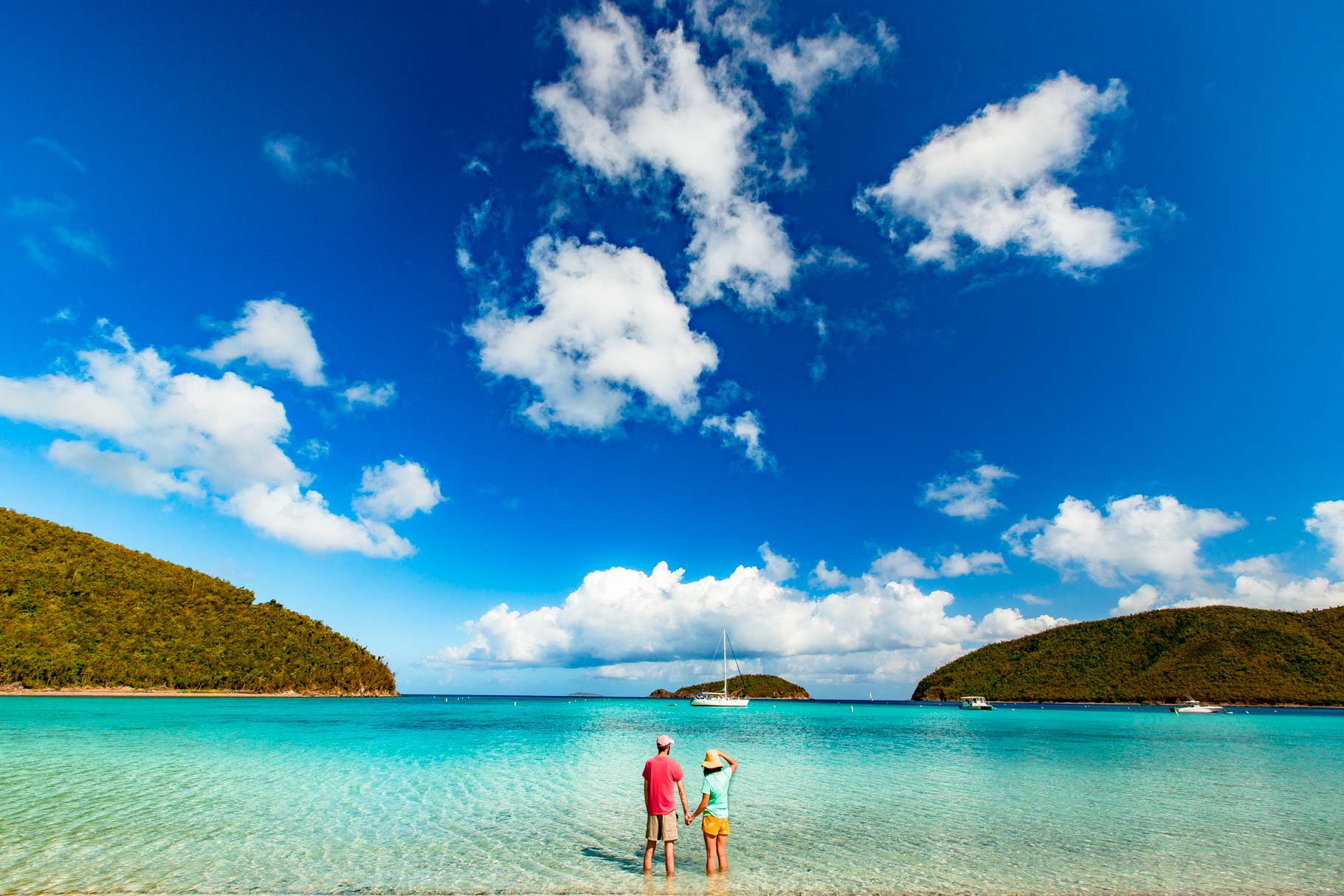
RELATED: Maho Bay Guide
2. Kayak the Crystal Blue Waters
What better way to experience the stunning beauty of the Virgin Islands than by kayak. Kayakers can see deep into the crystal blue waters and spot sea turtles, fish, and rays.
There are several places to rent kayaks of which my personal favorite is Maho Bay.
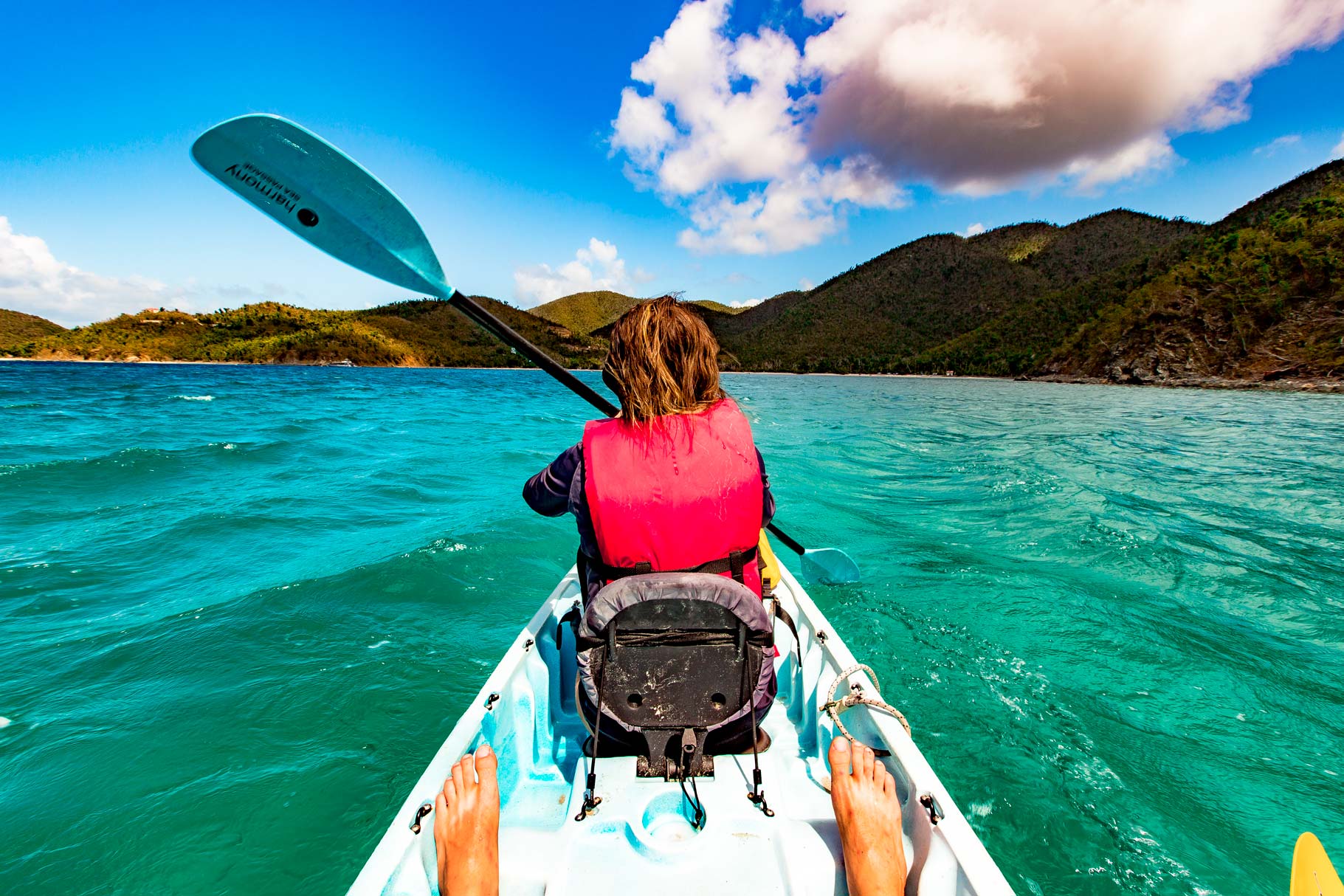
3. Explore the Beautiful Jungle Ruins
Virgin Islands National Park is full of beautiful ruins covered by jungle foliage. Exploring these ruins feels like taking a page out of the Indiana Jones playbook.
Beautiful ruins can be found all over the island. Some of the best spots include America Hill, Reef Bay Sugar Mill, Annaberg Plantation, and more.
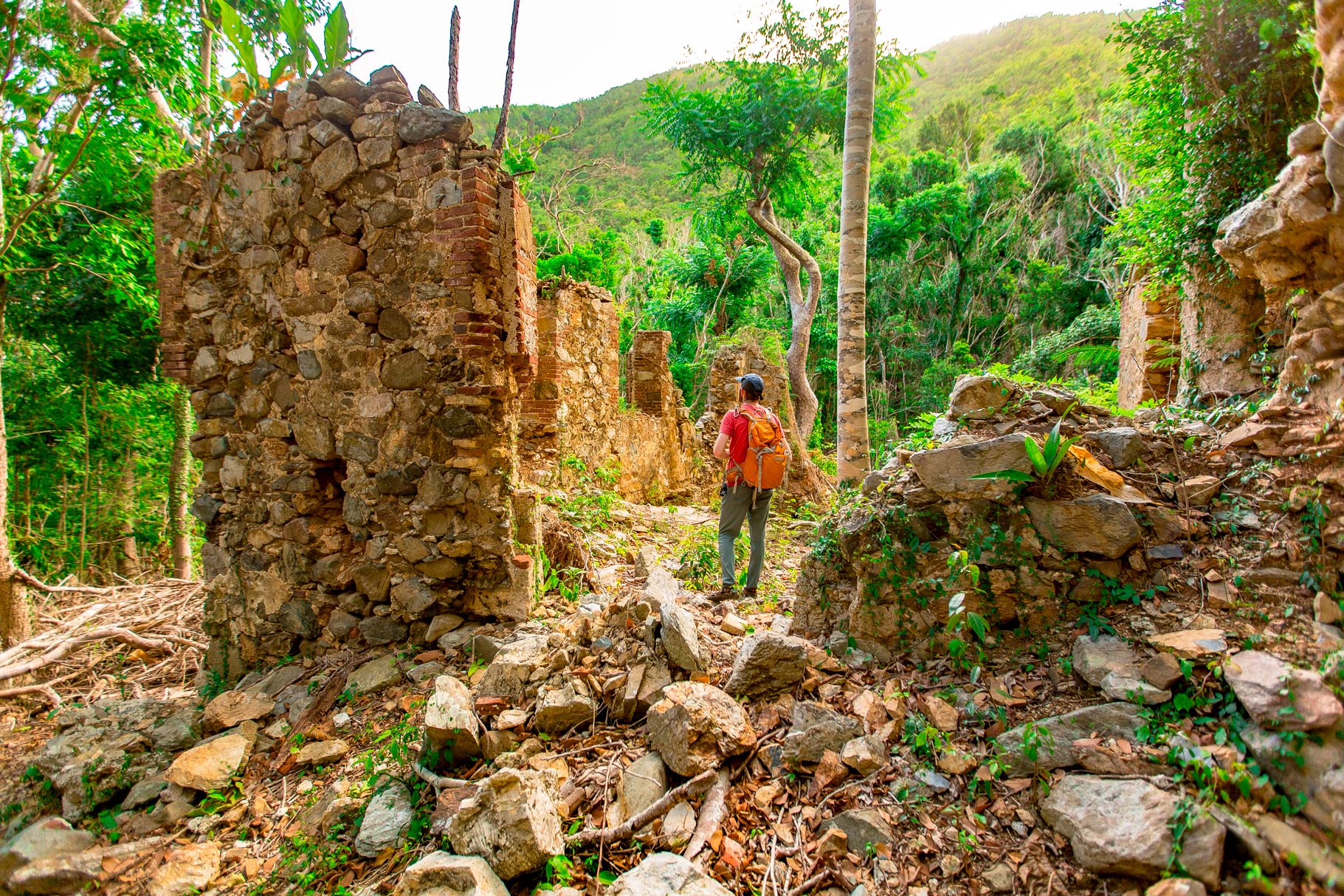
4. Swim and Snorkel With Sea Turtles
Virgin Islands National Park snorkeling is among the best in the world with all sorts of marine life including sea turtles, sharks, fish, coral reefs, and more.
The warm, crystal blue water on St John along with the plethora of sheltered bays makes for wonderful snorkeling conditions.
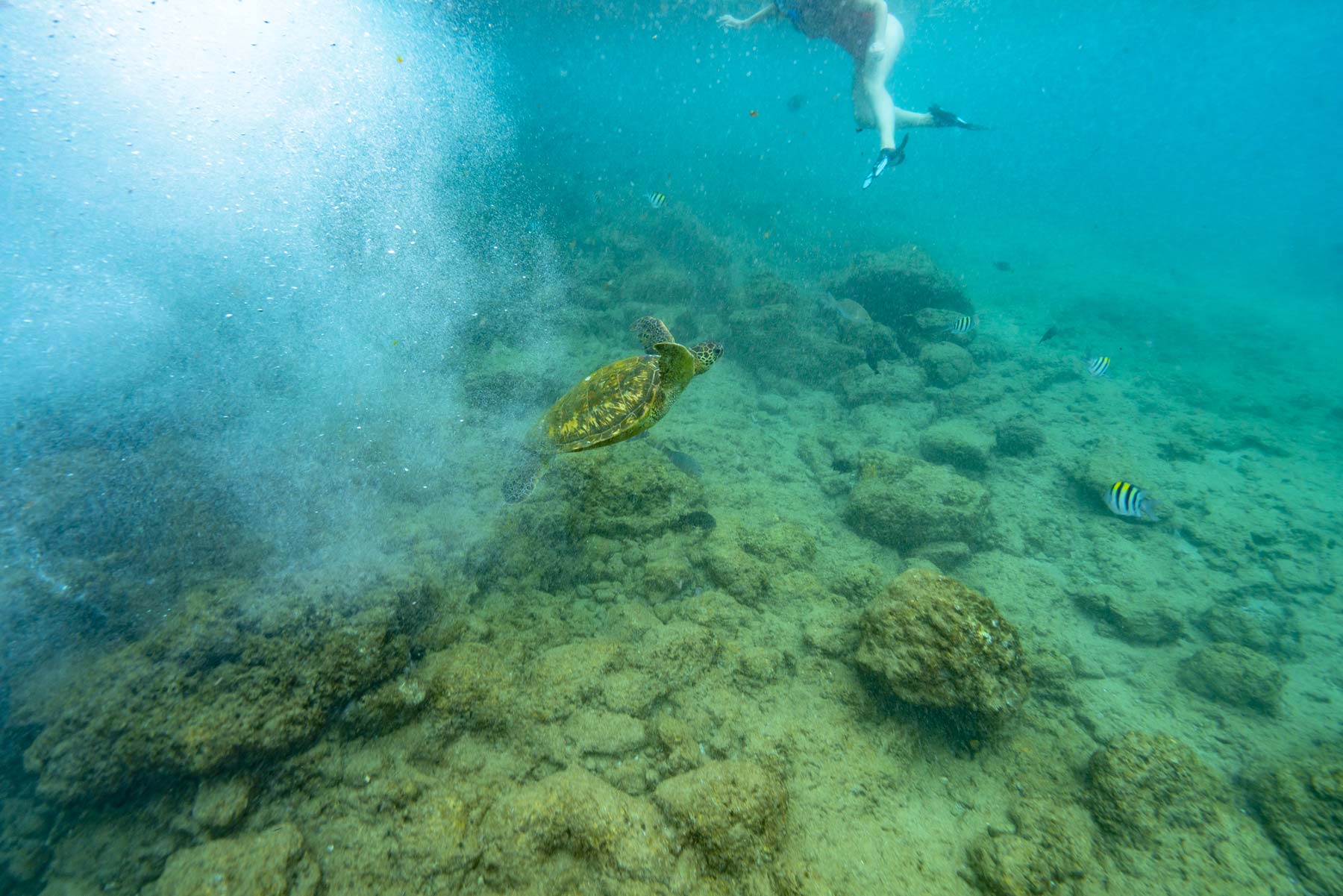
5. Catch a Sunset From Caneel Hill.
Caneel Hill trail is one of the most popular trails in Virgin Islands National Park due to it’s proximity to the resort and Cruz Bay. This Trail takes hikers to the top of Margaret Hill which (via some rocks) offers panoramic views of St. John perfect to soak in a spectacular sunset.
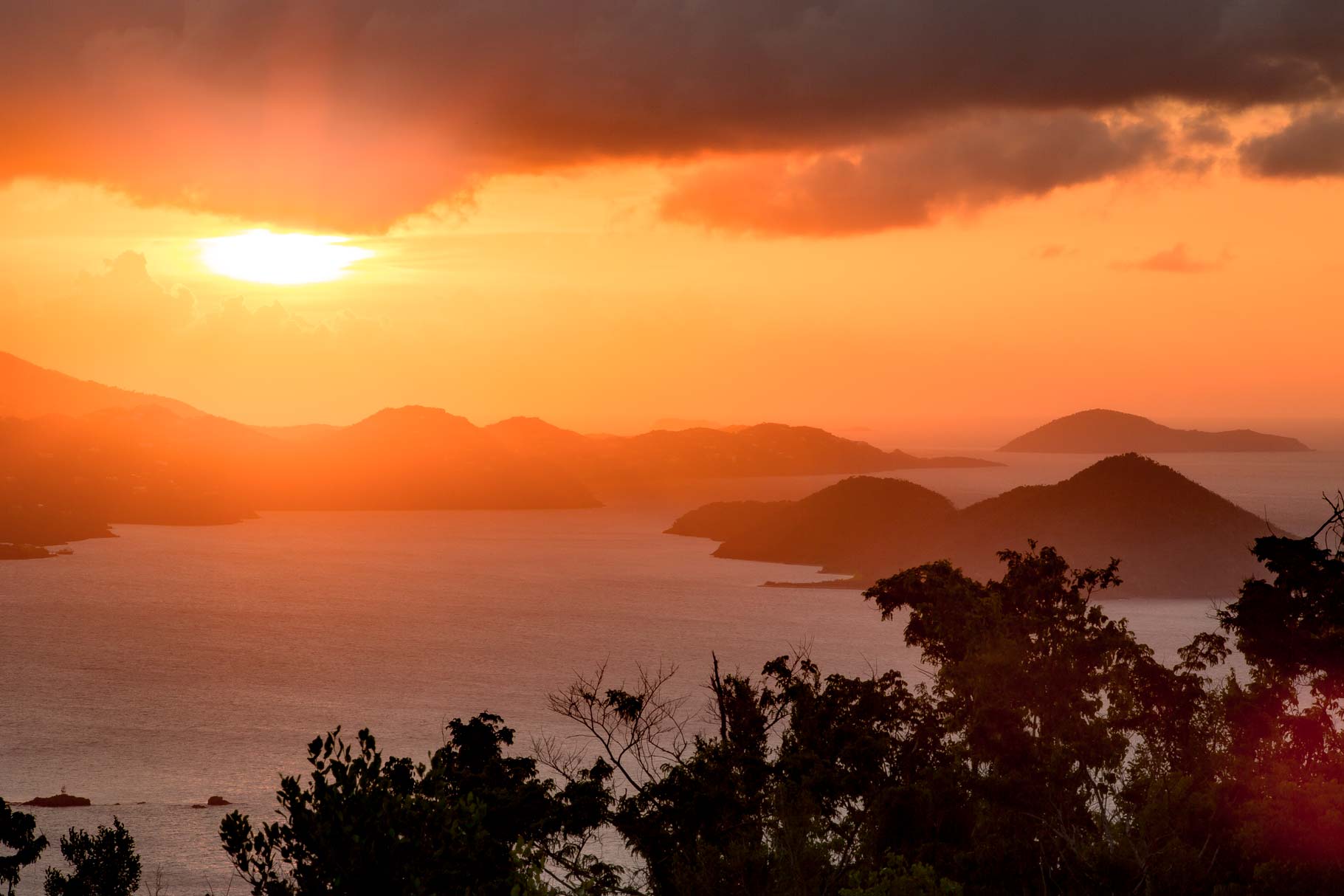
6. Discover the beauty of Waterlemon Cay
Waterlemon Cay is one of the most beautiful areas to explore in Virgin Islands National Park. Snorkeling here is incredible with rays, sharks, and beautiful reefs. Hikers can take in the scenic panoramic views of the bay from the Leinster Bay Trail.

7. Soak In the Idyllic Tropical Setting of Trunk Cay
Arguably the most iconic location in all of the Caribbean, Trunk Bay representing the epitome of the idyllic island paradise. Palm trees, crystal blue waters, sea turtles, snorkeling, and even the famous “underwater trail” await you at this beautiful white sand destination.
Trunk Bay is easily accessed via the main park road and is full of wonderful things to do.
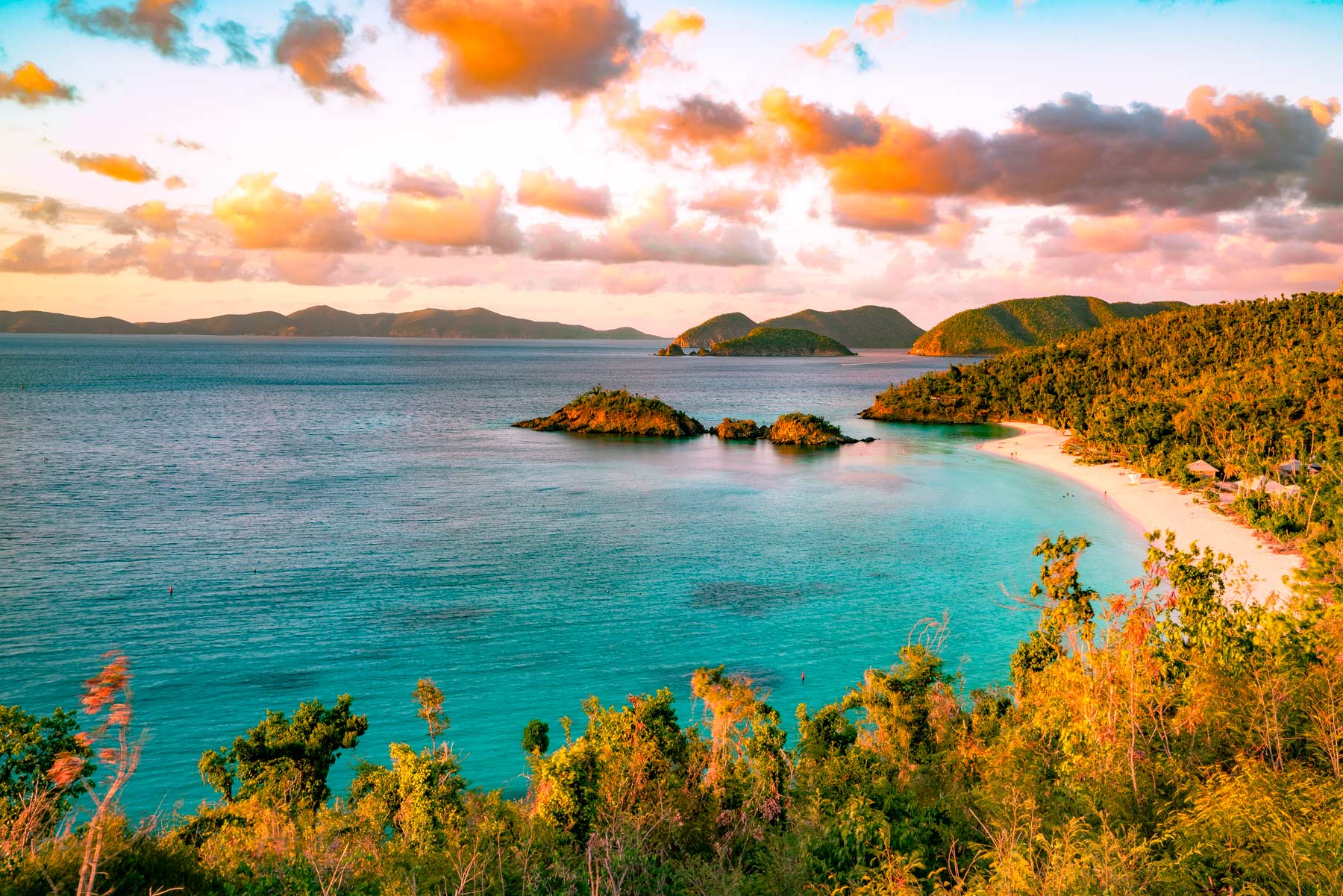
Where to Stay – Camping & Lodging
Cinnamon Bay Campground
Great news here folks! After years of rehabilitation following the devastating affects of a series of hurricanes, Cinnamon Bay Campground has re-opened for campers offering the only camping in Virgin Islands National Park!
The new grounds are pretty amazing with a variety of services including bare sites for tents, tents rentals, luxury eco-tents, and even cottages.
I highly recommend checking out this camping area and reserving a campsite as early as you can.
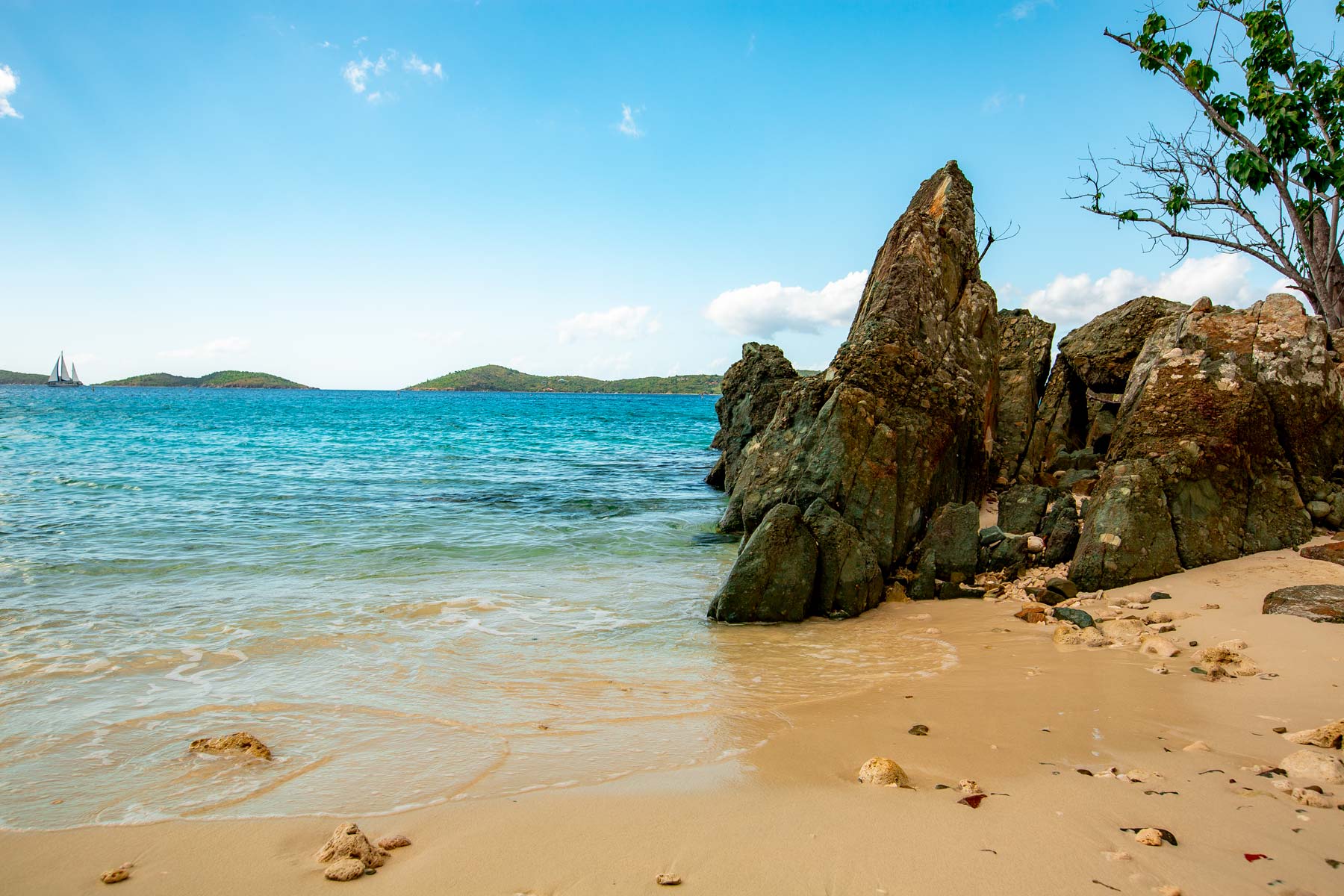
Virgin Islands Hotels, Motels, & Resorts
Virgin Islands National Park has a single flagship resort inside the park with luxurious onsite dining options that was open prior to the hurricane. As a result of damage sustained, and disputes with the current owners and the US Department of Interior, Caneel Bay Resort is closed at least through 2022.
Where to Stay
Visiting Virgin Islands National Park? If you haven’t decided where to stay (yet) check out our helpful guide on visiting Virgin Islands National Park for tips. Don’t have time? Here’s our favorite place to stay on St John.
Due to the long term closure of Caneel Bay (the only resort in the park destroyed by the 2017 hurricanes) and the ensuing battle with the park service over the future management of the property, the closest hotels & resorts are back in Cruz Bay.

Where to Eat – Restaurants & Food Options
Virgin Islands National Park has a number of dining options located in Cruz Bay and Coral Bay:

Driving in Virgin Islands National Park
Virgin Islands National Park has no official park shuttle to get around the park. To get around the park visitors will need to bring their own mode of transportation.
Currently a car is the best mode of transport in the park and can tourists not from the island should find a rental car from St Thomas and take the ferry to St John.
Alternatively, there are a few taxi services that operate on the island, mostly open air “safari-style” vehicles. Many of these taxis run on a fairly regular basis from Cruz Bay to many of the top tourist spots on St. John.
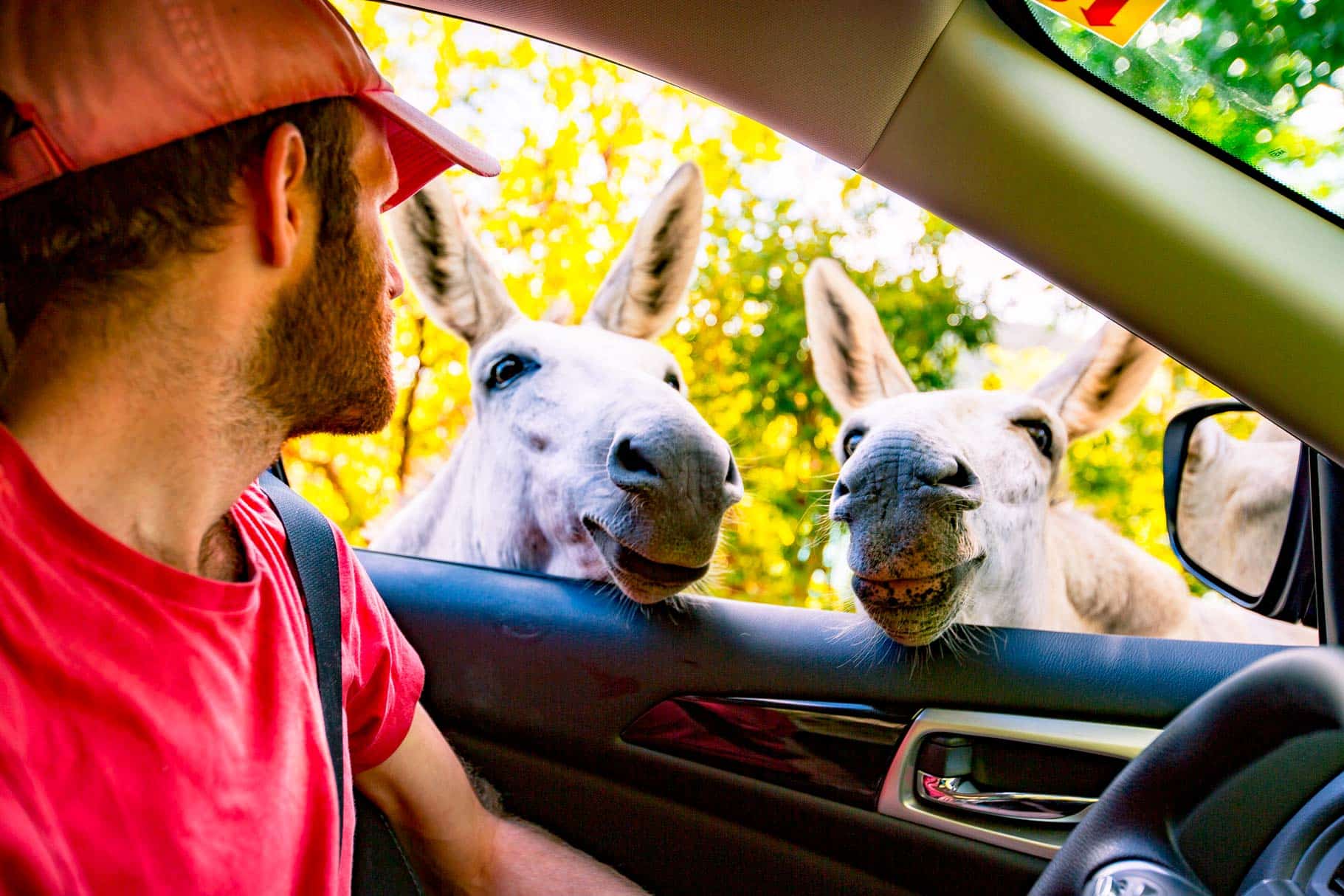
Photos of Virgin Islands National Park
Photos of Virgin Islands from the production of our film.
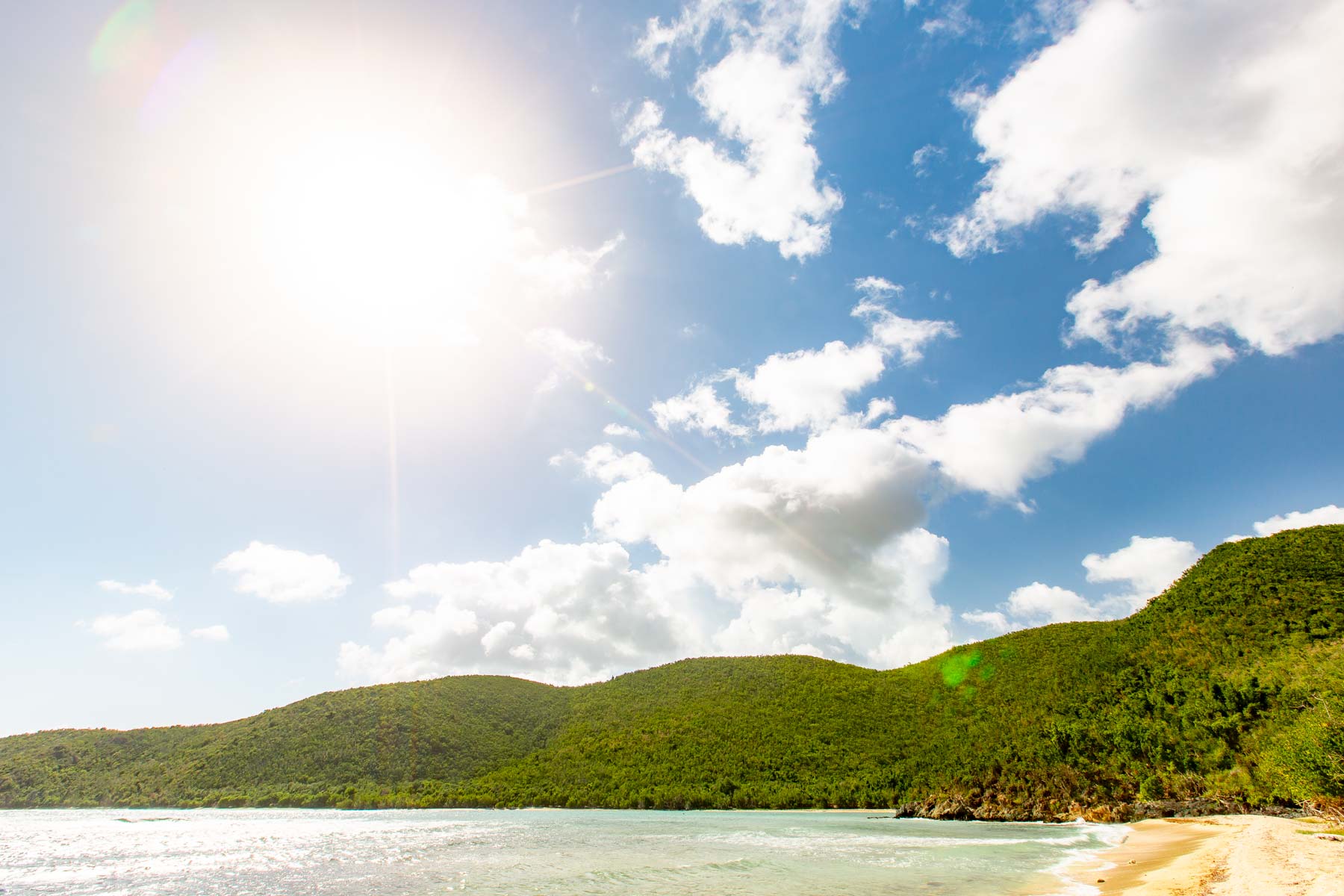



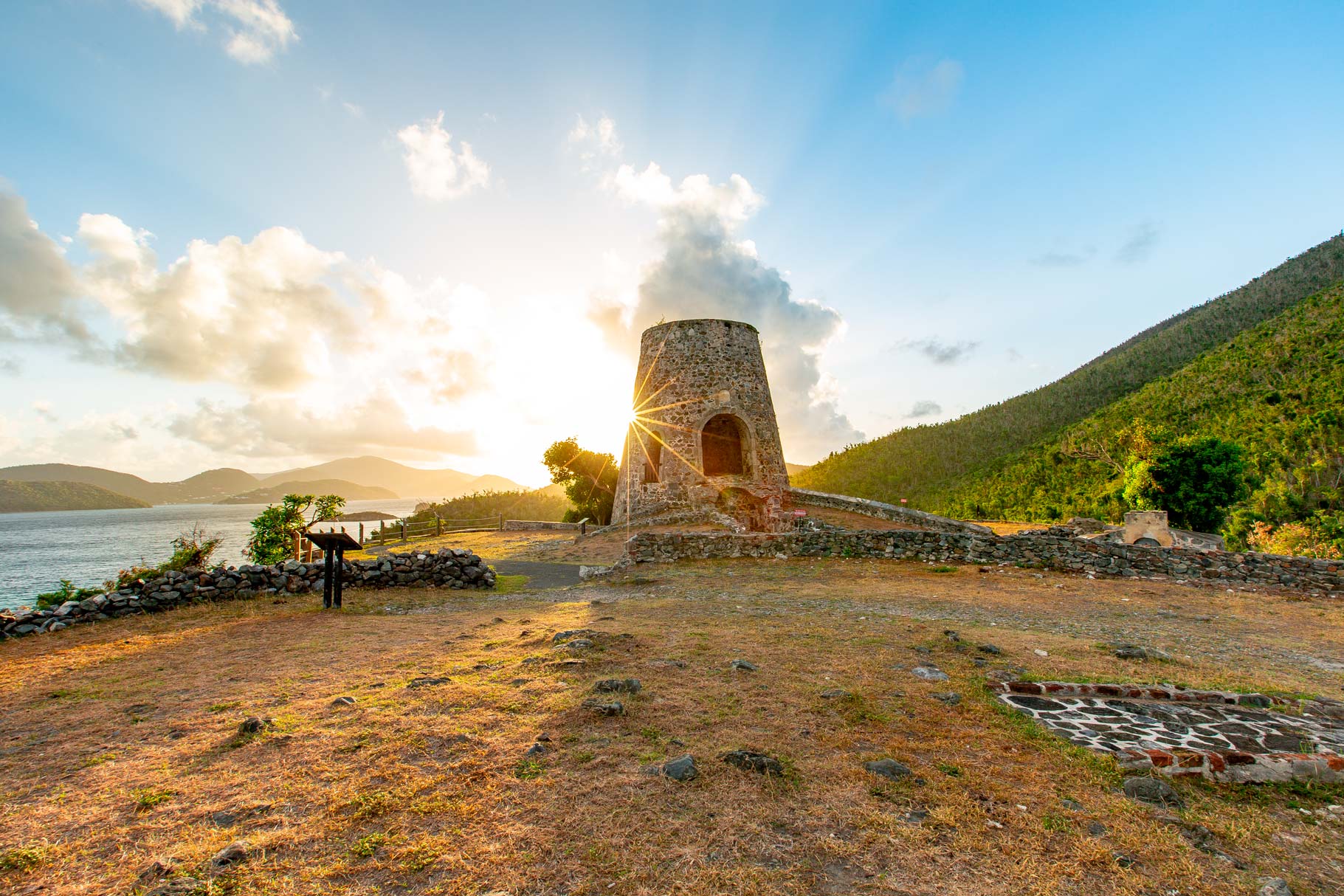


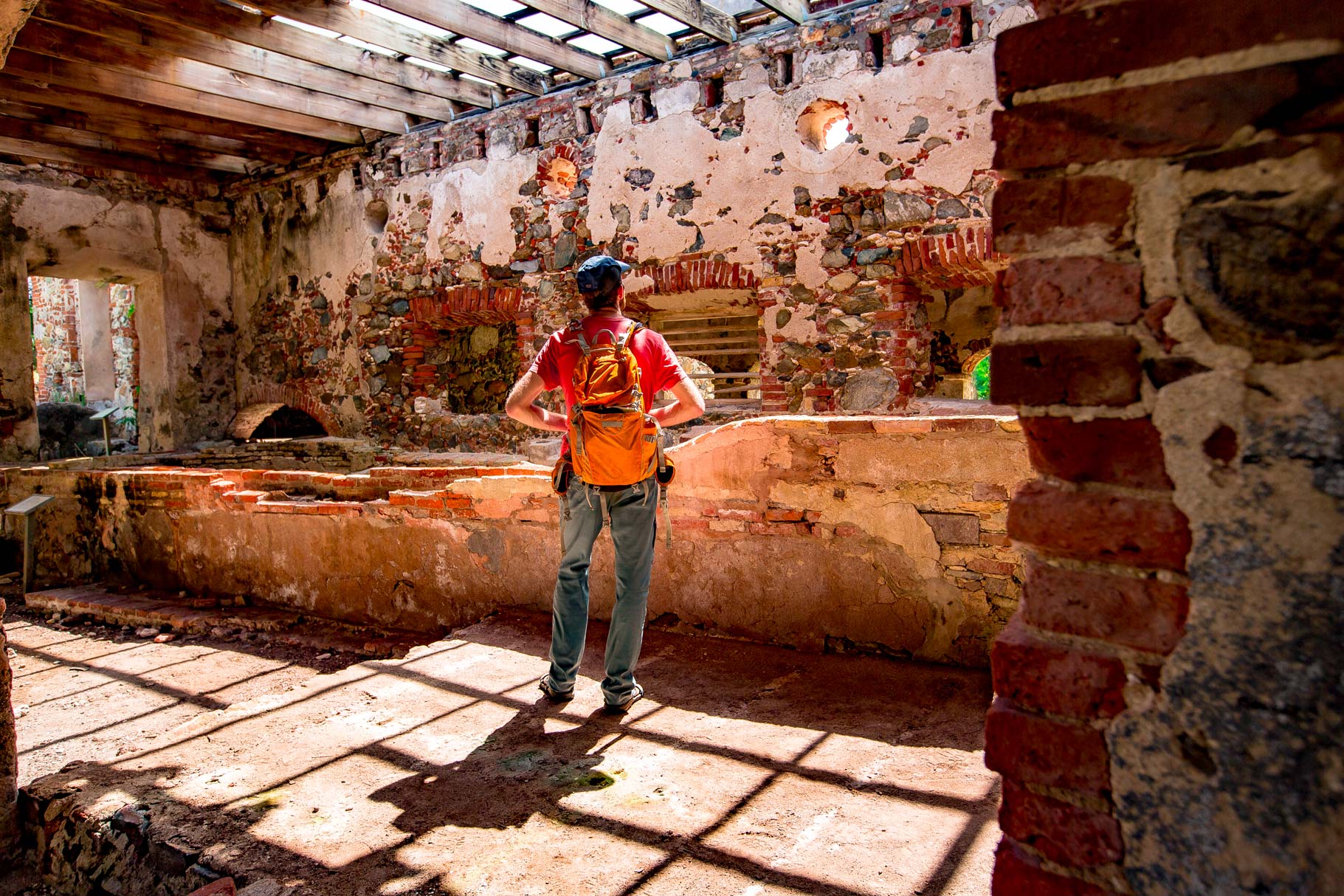


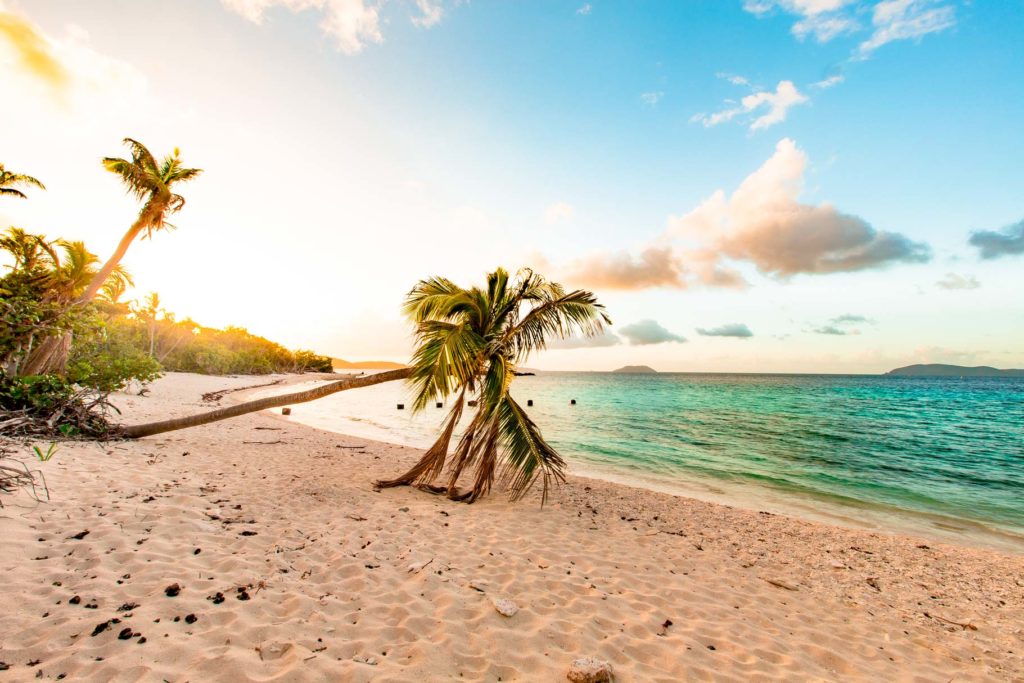


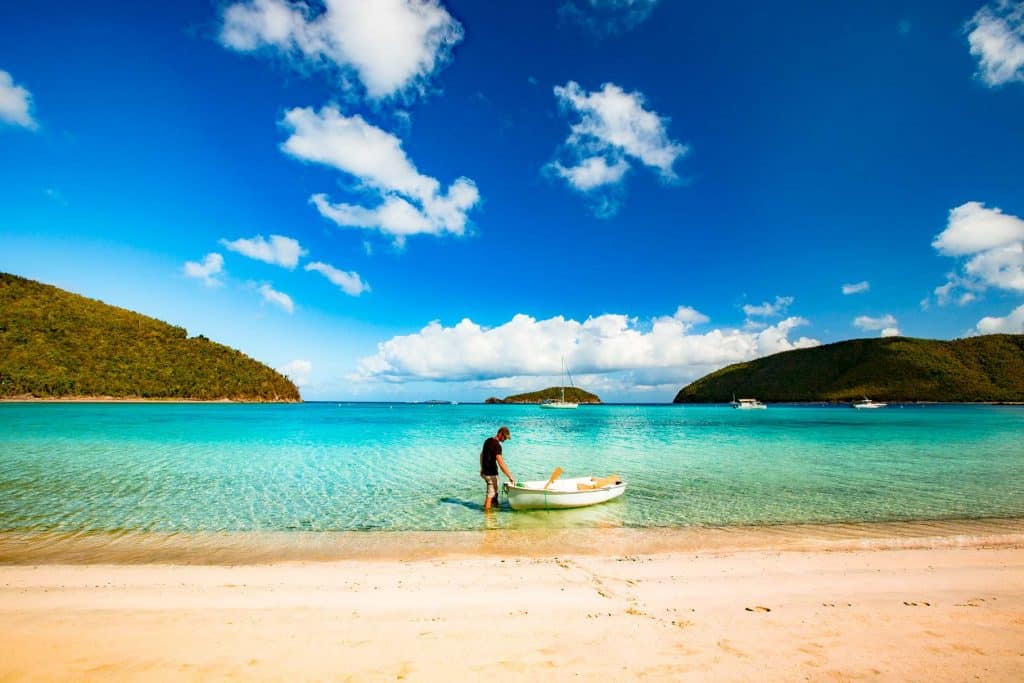

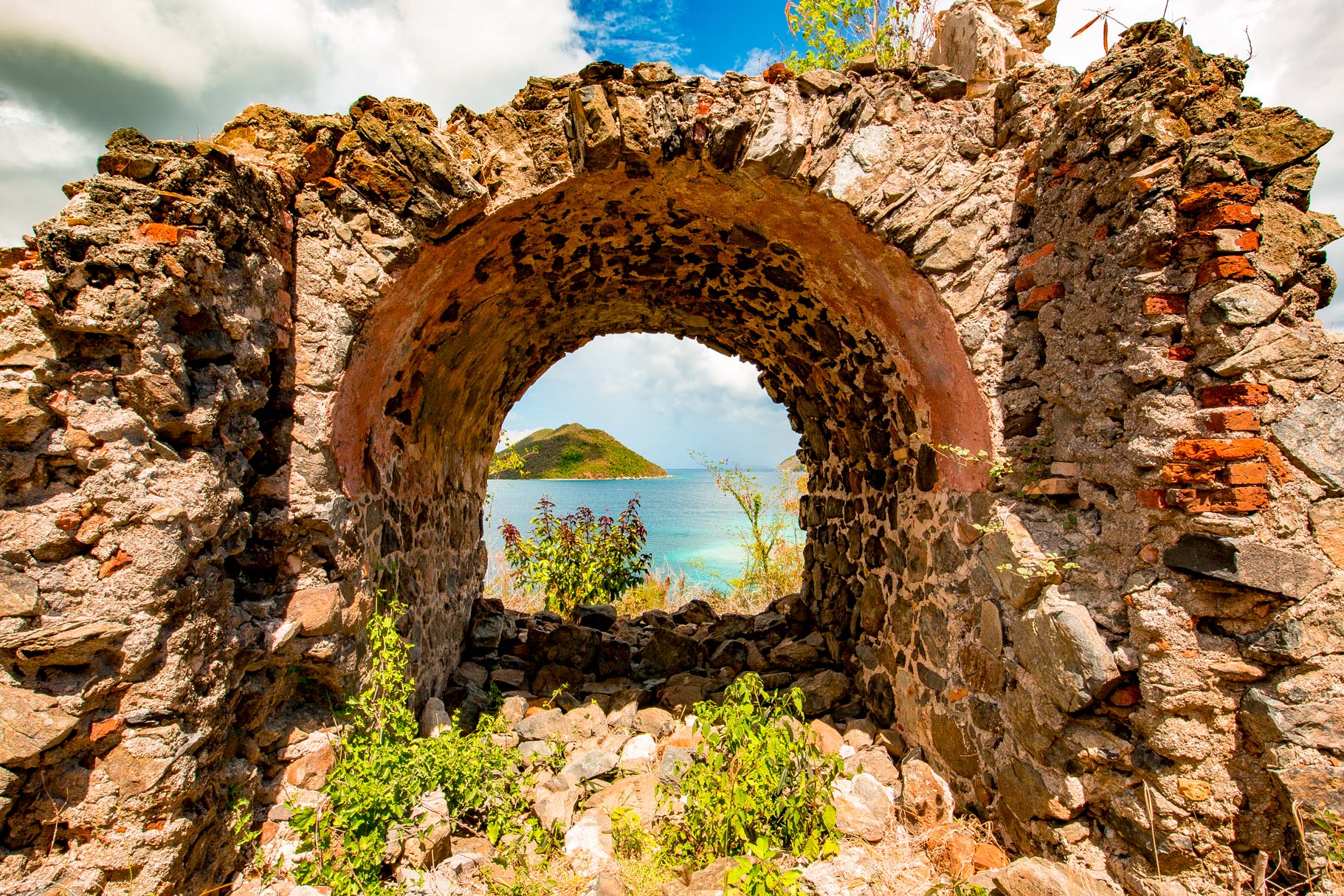
Summary | Leave us a Comment!
That’s a wrap folks! Hopefully you feel like you’ve got a good handle on your next trip to Virgin Islands National Park. Please leave me a comment below and let me know if you have any questions or comments.
So, I hope to see you on the trails sometime soon!
Here’s Some Related Posts
- Washington’s National Parks are the Best in the World – Complete Guide
- EPIC Guide to All of Alaska’s National Parks
- ALL 63 National Parks Ranked from Best to Worst 2021
- 10 Best National Parks Road Trips in America
Pin Virgin Islands National Park!

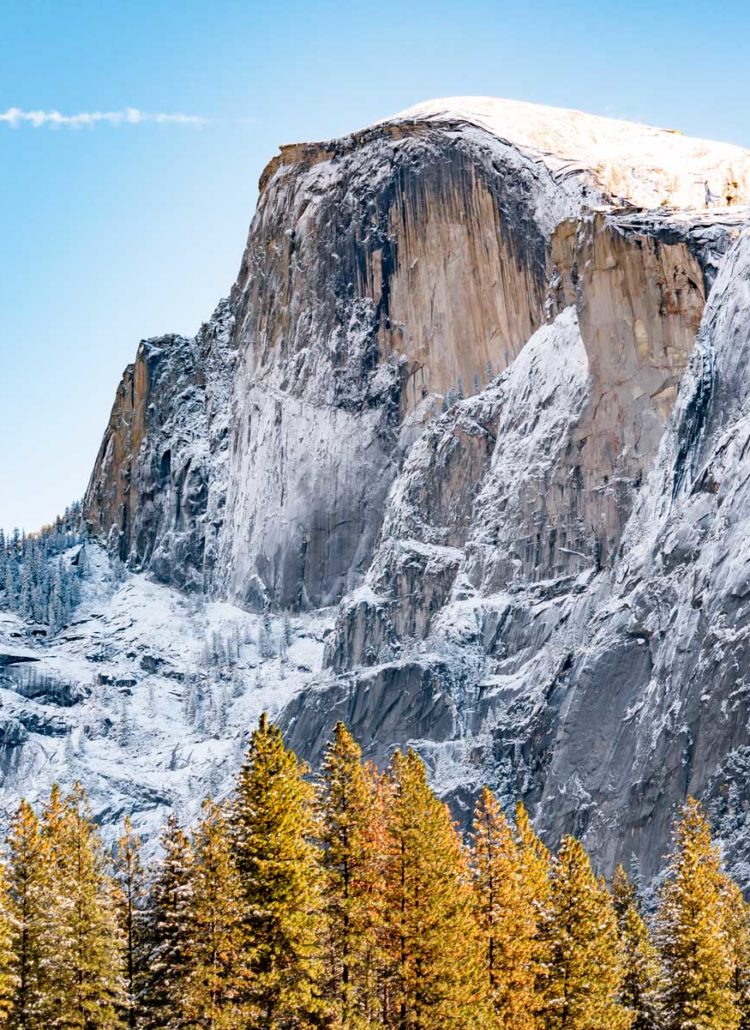
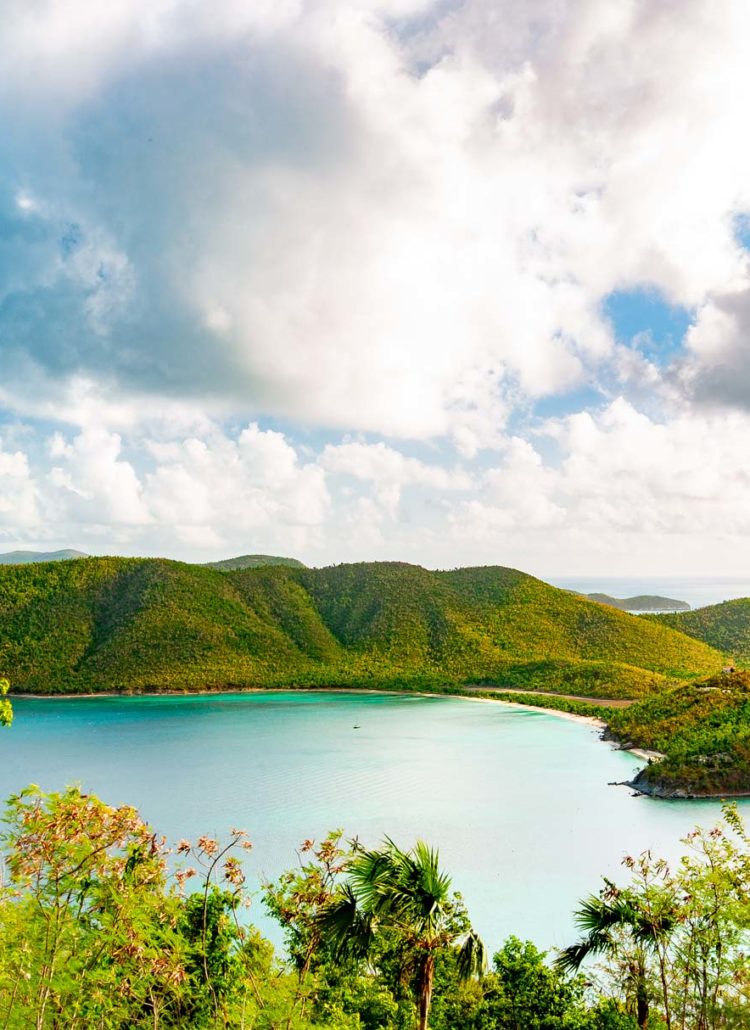
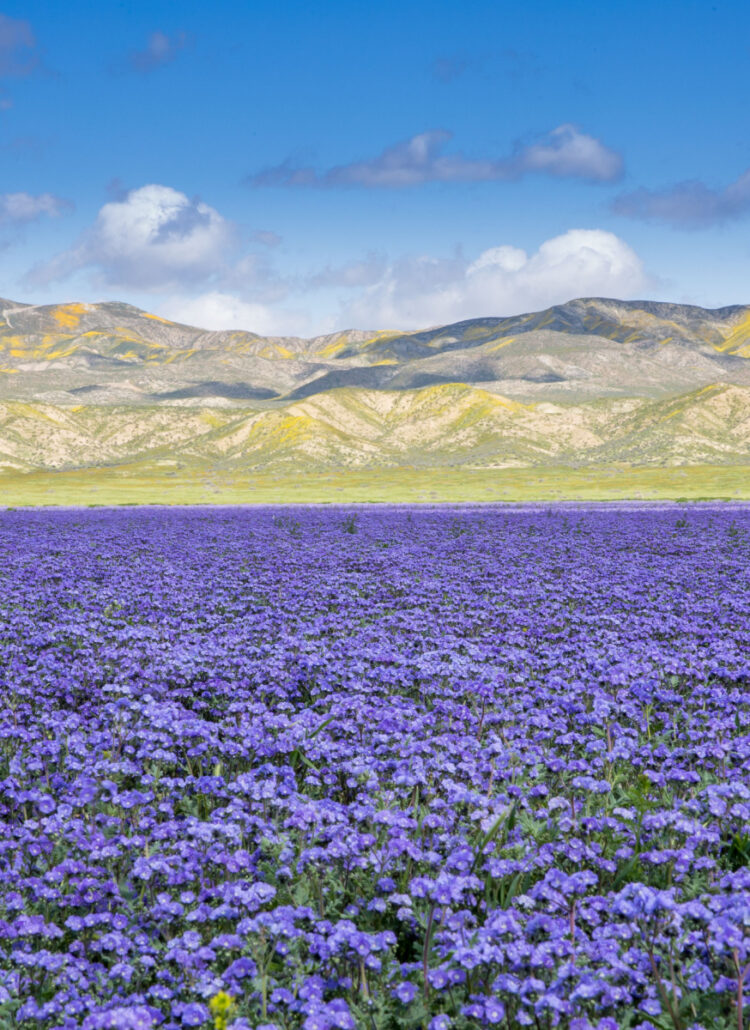
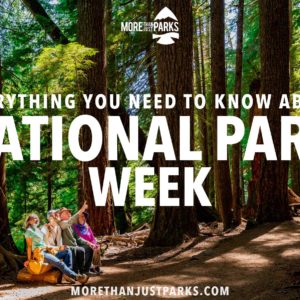

that is very informative for me because I am find like that information